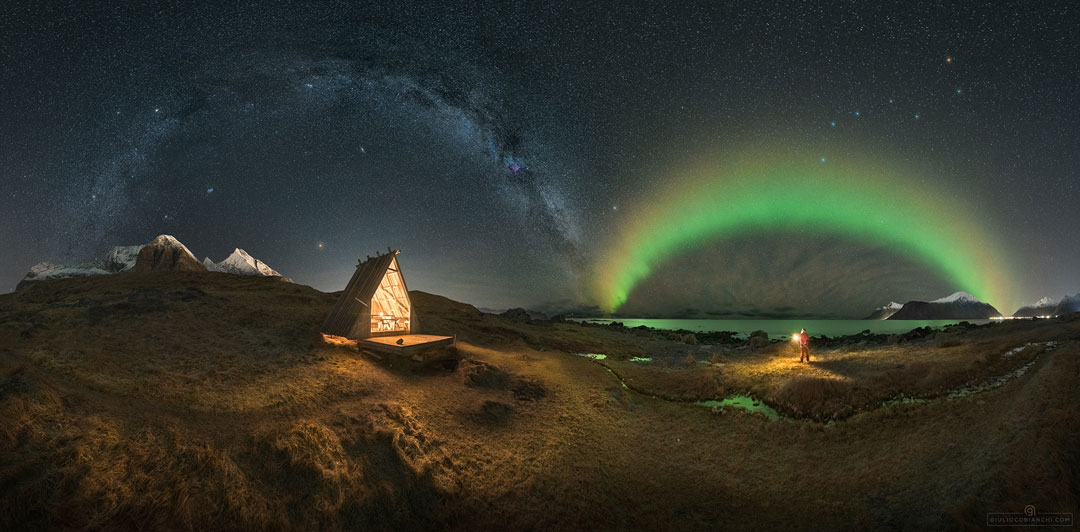2021年01月13日
Arches Across an Arctic Sky
Image Credit & Copyright: Giulio Cobianchi
Explanation: What are these two giant arches across the sky? Perhaps the more familiar one, on the left, is the central band of our Milky Way Galaxy. This grand disk of stars and nebulas here appears to encircle much of the southern sky. Visible below the stellar arch is the rusty-orange planet Mars and the extended Andromeda galaxy. For a few minutes during this cold arctic night, a second giant arch appeared to the right, encircling part of the northern sky: an aurora. Auroras are much closer than stars as they are composed of glowing air high in Earth’s atmosphere. Visible outside the green auroral arch is the group of stars popularly known as the Big Dipper. The featured digital composite of 18 images was captured in mid-December over the Lofoten Islands in Norway.
APOD Year in Review (2020): RJN’s Night Sky Network Lecture
Tomorrow’s picture: open space
极区天空的拱形光弧
图像提供与版权:Giulio Cobianchi
说明:天空中这二道庞大的拱形光弧是什么?左侧是我们较熟悉的银河系中央盘面,它是由众多恒星和星云汇集而成,看似环绕整个南天的盘状结构。银河拱的下方,则有锈红的火星和弥漫的仙女座大星系。在这个酷寒的极区夜晚短短的数分钟期间,另一道由极光聚成几乎环拱整个北天的拱形光弧,出现在影像右侧。地球高层大气中的极光,显然远比恒星要近。在泛绿的极光弧上方,可见到名为北斗七星的一群恒星。这幅主题影像,组合自12月中旬摄于挪威罗弗敦群岛的18张照片。
APOD年度回顾(2020年):RJN夜空网络讲座
明日的图片:open space



